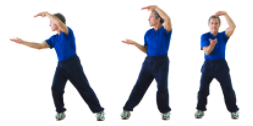Reflective Exercise: A Method for Helping the West to Better Appreciate the Health-promoting Power of Tai Chi and Qigong
Abstract
Tai Chi and Qigong are now established in the West, but their importance in terms of health promotion is poorly appreciated. This underappreciation stems from the difficulty of learning Tai Chi and Qigong relative to learning either conventional Western exercise and sports or rival Far Eastern mind-body methods such as yoga and mindfulness, which got to the Western marketplace and institutional imagination first. Reflective Exercise (RE) was developed to help overcome these obstacles. Based on Tai Chi and Qigong principles and trends that emerged in modern China in the latter half of the 20th century, RE condenses an easily-learned Tai Chi routine, followed by sensory meditation exercises in standing, sitting or reclining positions. Both Tai Chi and Qigong focus the mind on present physical conditions of the body, such as balance, weight distribution, breath, and sensations in the hands. These effects put Tai Chi and Qigong into a category of mindfulness exercise called “interoception” defined as a sense of the internal state of the body. RE tightens the interoceptive focus of Tai Chi and Qigong to a pulsatile sensation that moves along pathways that connect the lower abdomen and the head. These pathways follow not only traditional acupuncture channels, but also the anatomy of the cardiovascular system and the neuroanatomy of the sensory dimension of the autonomic nervous system. Moreover, the ability to sense these pathways imparts the ability to channel and focus the immune system on infections and injuries. Four research studies conducted at the University Virginia School of Medicine found support for RE’s claims. Two of these studies revealed that enhanced interoceptive ability through RE training can significantly reduce respiratory infections in elite college swimmers and the symptoms of traumatic brain injury (TBI) in military veterans. The other two studies showed that the interoceptive ability to sense the pulsatile sensation moving from lower abdomen to head (defined as “the Reflective Response”) correlates as a significant increase in low frequency heart rate variability (LF HRV), a phenomenon that a large body of research associates with balanced immune system activation.

Published
How to Cite
Issue
Section
Copyright (c) 2020 John Alton

This work is licensed under a Creative Commons Attribution-NonCommercial-NoDerivatives 4.0 International License.

